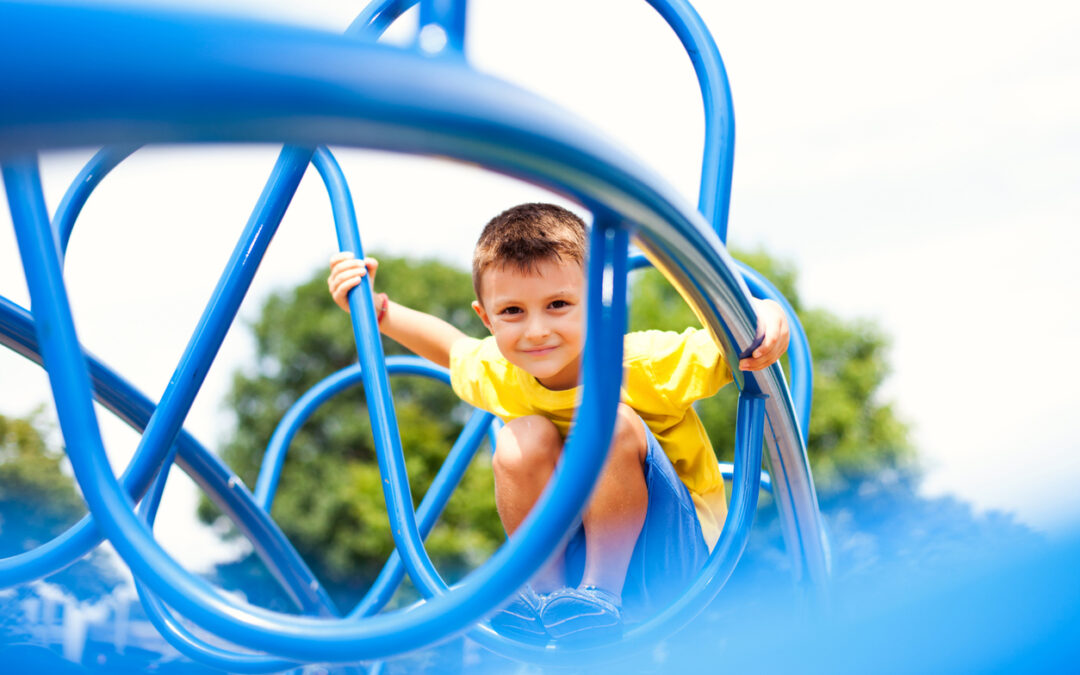“You’re Going too Fast!”
We have all been that parent, watching your child take off at top speed, still looking at you while shouting, and then CRASH. Children are experts at going too high, running too fast, and pushing every limit. Enter the term “risky play”, coined in the early 2000s when scientists began studying why children take risks and what made those risks so developmentally important. Today, with parenting on full display and under constant commentary, allowing children to take risks can feel daunting. At Celebree School of Franklin-Cool Springs, we understand the importance of risky play and how to support it safely and intentionally.
What is Risk?
Brains identify risk in any activity where an outcome is unsure. In children, this looks very different than for adults. For example, a child no longer wants a toy that he’s playing with, so he throws it across the room. As adults, we see the risk if that toy hits another child or if it breaks into small pieces. But for a child, the outcome is simple: they wanted the toy gone, and now it is gone.
Now ask that same child to throw a beanbag into a basket. For an adult, we can assess how hard we need to throw, judge the angle, and get reasonably close to the target. But for a child, they don’t know how much force they need to use or how to hold their bodies, so they don’t fall forward when they throw. For a child, throwing a toy is risky play.
Developing Brains Need Risk
Adults constantly assess distance, speed, priorities, and physical limits without realizing it. What we take for granted is that those skills are developing in our brains as toddlers. Children need opportunities to try things that feel risky. They need to climb what feels “too high” so that they can learn how it feels to judge height. They need to go too fast so they can learn how to control their body as they move. These experiences help shape decision-making, coordination, and confidence.
Vestibular and Proprioceptive Sensory Input
Learning how to move our bodies safely is one of the most important things we teach children. Even early milestones, like bringing hands together, take tremendous brain coordination. Risky play strengthens two key systems: the vestibular system, which supports balance and movement, and the proprioceptive system, which helps children understand where their bodies are in space. Without chances to challenge these systems, tasks like hanging backpacks, managing clothing, or standing in line can feel overwhelming once children reach kindergarten.
Interoception Awareness
Risky play also builds interoception, the sensory system that tells us how our body feels on the inside. It helps children notice rapid breathing, muscle fatigue, or a fast heartbeat. When a child climbs a tall structure and realizes their heart is pounding, they can recognize that as fear and decide: “I want to keep going,” or “This doesn’t feel right for me right now.” That kind of autonomy builds emotional regulation and confidence, and might even prevent a parent from having to climb up and rescue them!
How to Encourage Risky Play
Not all risky play is created equal. We want to create play spaces that are challenging, but not dangerous. But giving children space to be “risky” allows them to learn to trust their own abilities. Try phrases like:
- “Do you know how to get yourself down safely?”
- “I believe in you.”
- “I’m going to show you how to do this safely, then you can practice!”
- “Does your body feel safe?”
After active play, talk about how their bodies feel. Do they notice sore muscles or feel out of breath? Helping children identify what it feels like to push themselves will help them recognize it in themselves when they are playing independently.
Risky Play the Right Way
While every child will have a different definition of risky, allowing children to push their boundaries in a safe and secure environment is an important part of development. At Celebree School of Franklin-Cool Springs, we allow our students to experiment and explore, while making sure we are providing context and helping them identify their feelings. We want to send children to kindergarten feeling confident in their abilities and ready to tackle that next challenge armed with resilience and a growth mindset.
-Written by Abby Knight, Assistant School Director

